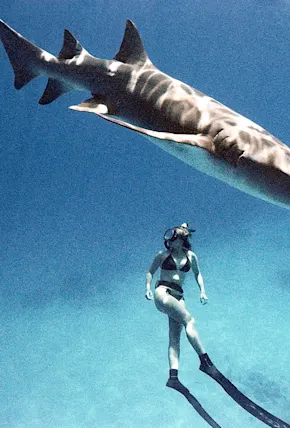Caitlin Fullam is a travel and fine art photographer living in Santa Cruz, California. She tells stories of awe through self-portraiture and whimsical dreamscapes.
I often describe my creative journey as a series of lightbulb moments. Intoxicating inspiration pulses through me and compels me to create. It’s an intense, wonderful feeling that changes the direction of my work and carries me farther along my path. If you’ve experienced moments like these, then maybe you have also felt the opposite; frustrating stretches of drought when inspiration is nowhere to be seen.
It was during one of these bleak periods of creative burnout that I decided to put my digital camera away completely. The winter blues combined with 2020 pandemic grief had me questioning my career path as a photographer. So I decided to dust off my film camera and focus solely on shooting double exposures for two months as a last ditch effort at reigniting my creativity. And so my obsession with double exposures began.



















